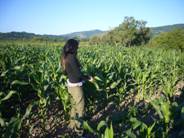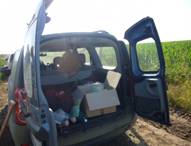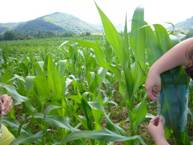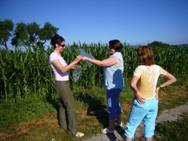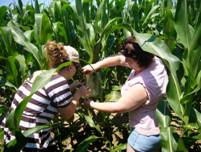
|
1. Establishing the areas where the pest has been reported until now This objective continues the presentation of the partial results found in the synthesis of the papers written in 2007. It is necessary that the information of the year 2008 be updated because of the pest capacity to gradually expand to new areas, with the possibility of taking new directions.
2. Identifying the ecological factors from the species’ country This objective implies the establishing of the structure and functionality of the environmental factors from the country of origin of the Diabrotica sp. adults. It is known the fact that the species of Diabrotica (354 species) have neotropical origins, and are spread especially in the South and the Central part of America. This thing must be highlighted. It involves a rigorous exploration of the area biotype, taking into account the aspects that aim to the movement possibilities to new areas, of invasion and of adaptation to the specific climate of the research location. The activities necessary to achieve this target were:
The information on every climatic factor that influences the adult’s development is detailed in the activity annual report, and it is based on bibliographical references. General characteristics of the climate in USA and Romania
3. Identifying the ecological factors from the uninfected and the infested areas by the pest in our country The activities related to this objective are:
To achieve this objective, there was made a registration of the climatic data (temperature, soil humidity, air humidity, air currents) form different geographical areas. 4. Organizing the practical work The activities related to this objective are:
To organize the practical work, first of all, the locations where we placed the traps were established (photos 1,2): Gataia (115m), Simand (115 m), Covasant (134 m), Chelmac (140 m), Soimi (145 m), Gura Vaii (164 m), Varfurile (228 m), Prisaca (270 m), Resita (323 m), Teregova (396 m) and Domasnea (557 m). This choice was based on the movements in different directions, starting from a low altitude (Gataia – 115 m) to a higher altitude (Domasnea – 557 m), that should allow the growing and the development of corn plants (photos 3, 4). As a result of studying the location possibilities, we installed on site 2 traps with Csalomon® sexual pheromone in each corn crop (that was considered an experimental version) (photos 5, 6). The distance between the 2 traps was of 100 m where the corn batch was large enough, and of 50 m where the distance was smaller.
5. The dissemination of the partial results This objective includes activities referring to: publishing the results, participating to conferences, creating a web page and visiting different institutes from our country, and abroad, in order to establish new collaborations. All these can be found in the activity annual report. 6. Establishing the control points and following the movement direction, its speed, through comparative studies Actually, this objective aimed at following the monitoring in different geographical areas, and of the populations’ movement direction, after that research locations had been established, respectively the starting points. We used in our research these observations (especially in the western part of the country, where the pest is largely present, and where there is a various range of land.
Material and method. In order to view the altitude, we used the GPS bought in the present contract. The readings were made daily for each trap, for trap 1 and 2 / town. After each reading the samples were removed. The change of the traps was made at every 2 weeks. (photos 7,8,9).
7. The elaboration of some partial spreading patterns according to the ecological factors By the analysis of the obtained data according to the climatic factors and the comparative study on different geographical areas, we had chosen some partial spreading patterns (spreading maps, correlations) on which we can establish ways to predict the final distributions, and ultimately to elaborate the final patterns. Activities related to this objective were:
|

